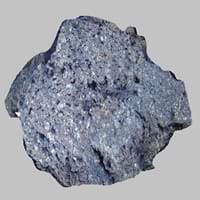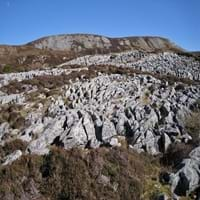Mugearite is a type of oligoclase bearing basalt, also comprising of olivine, apatite, and opaque oxides 0
Durable Rock, Medium Hardness Rock 0
Glassy, Massive, Porphyritic, Scoriaceous, Vesicular 0
Black, Brown, Light to Dark Grey 0
Floor Tiles, Flooring, Homes, Hotels 0
As Building Stone, Garden Decoration 0
As Dimension Stone, Cobblestones, Rail Track Ballast, Roadstone 0
Artifacts, Monuments, Sculpture 0
Alkaline Basalt, Boninite, High Alumina Basalt, Mid Ocean Ridge Basalt (MORB), Tholeiitic Basalt, Basaltic trachyandesite, Mugearite and Shoshonite 0
Has High structural resistance against erosion and climate, Very fine grained rock 0
Archaeological Significance
0
Mugearite forms when lava reaches the Earth's surface near an active volcano. The temperature of lava is between 1100 to 1250° C when it gets to the surface. 0
Olivine, Plagioclase, Pyroxene 0
Aluminium Oxide, CaO, Iron(III) Oxide, FeO, Potassium Oxide, MgO, MnO, Sodium Oxide, Phosphorus Pentoxide, Silicon Dioxide, Titanium Dioxide 0
Burial Metamorphism, Impact Metamorphism 0
Biological Weathering, Chemical Weathering 0
Heat Resistant, Pressure Resistant, Wear Resistant 0
Deposits in Eastern Continents
0
Deposits in Western Continents
0
Deposits in Oceania Continent
0
Information about Mugearite
Rocks are naturally occurring solids which are composed of minerals & have been used by humans since ages. From Stone Age, rocks are used for various purposes. Also, the metals and minerals found in rock play an important role in our life. Get to know all the Mugearite Uses. We have provided you with all information about Mugearite rock here. Mugearite is a type of oligoclase bearing basalt, also comprising of olivine, apatite, and opaque oxides. Mugearite is available in black, brown, light to dark grey colors. The streak of a rock is the color of powder produced when it is dragged across an unweathered surface. The streak of Mugearite is white to grey. Get to know more about Mugearite rock and characteristics of Mugearite rock in the next sections.









